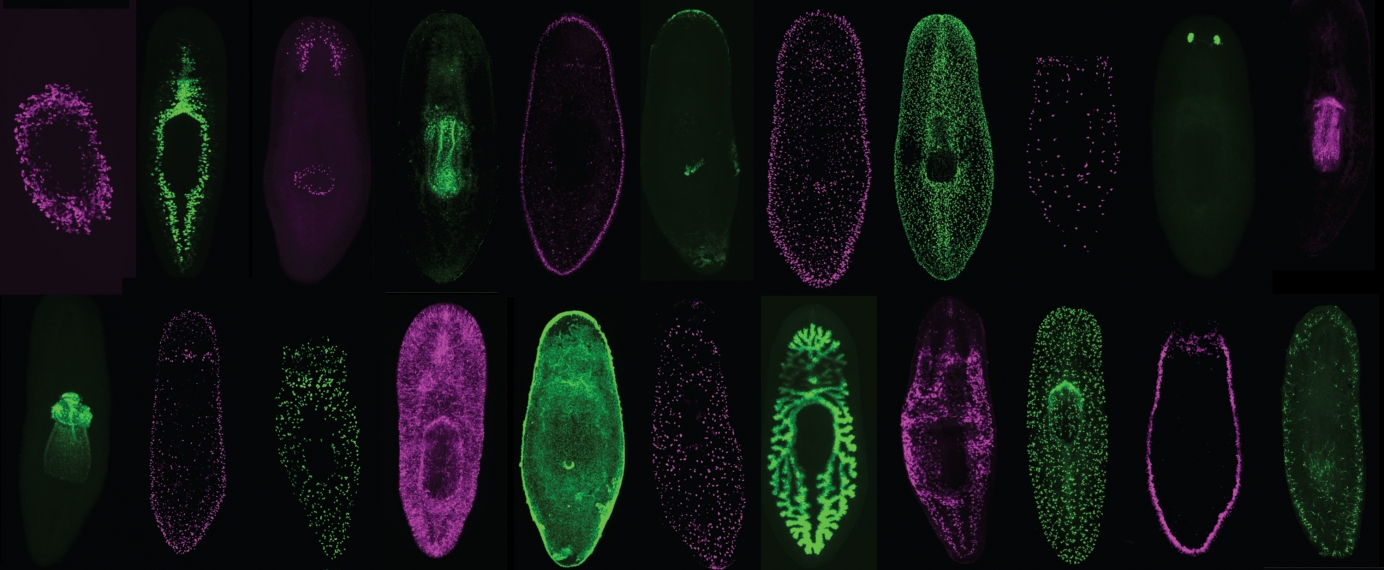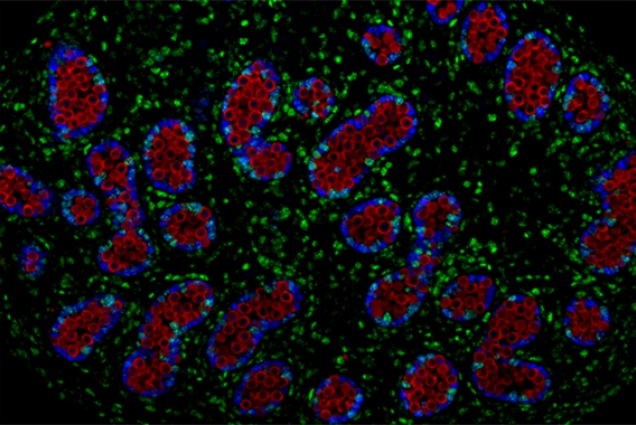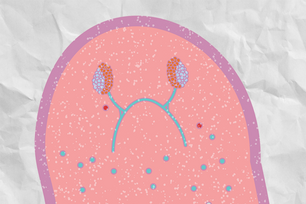Regeneration, Rejuvenation and Aging
Our researchers are investigating important questions about how organisms develop —How does one generation beget the next? How does a single cell give rise to a complex organism?—and, with the help of new tools and innovative approaches, revealing answers that give us a better understanding of the fundamental aspects of life.

Whitehead Member Peter Reddien has created a transcriptome atlas for the planarian flatworm.
Christopher Fincher/Whitehead Institute
In a multicellular organism, a single cell divides through the carefully orchestrated elaboration of a developmental program to form many different cell types that organize into discrete organs and tissues. Our researchers are tackling the questions of how organisms develop and reproduce. Other researchers are investigating how, in some species, certain organs can restart their developmental programs after cells are lost or injured in order to regrow the missing parts--they can regenerate. Whitehead Institute’s developmental research may provide insight into medical issues that arise during the production of sex cells or during embryonic development, and its regeneration research can help us understand how bodies develop and may contribute to the field of regenerative medicine.

Multicellular organisms are tasked with building an entire body out of a single starting cell. What genes, signaling pathways, and other mechanisms direct stem cells to the right location in a growing or regenerating body? How do cells know to grow an organ to a certain size? How do cells integrate information received from multiple signals to determine where to go and what to become? Our researchers are investigating these and other questions in order to understand the “rules” for building a body.

Our researchers have played instrumental roles in the field of stem cell biology. They advanced methods that allowed researchers to reprogram adult cells into induced pluripotent stem cells, and prompt those stem cells to differentiate into different cell types. Stem cells are very useful in disease modeling because they provide more accurate models of and better access to human biology in the lab, such as by allowing scientists to take cells directly from patients and reprogram them for use in research.

Rebecca Povilus
Plant biology is a vital area of research both due to the importance of plants in our food supply and because much of our knowledge on topics like genetics stems in part from research in plant models with broad relevance outside of the plant kingdom. One focus of our researchers is how plants inherit traits epigenetically, meaning that the inherited traits are not based on the genes, but rather on the presence or absence of molecules that alter the expression of genes.

Peter Nicholls/Whitehead Institute
Germ cells, the specialized cells that give rise to eggs and sperm, confer a type of immortality; these cells link parent to child, passing genetic material on through generations. Our researchers are investigating how germ cell lines keep producing healthy daughter cells for generations while other cell lines die off. The also study germ cell development to understand how and when cells are set aside to become germ cells, and how cells switch from mitosis to meiosis in order to create sperm and eggs.

© Can Stock Photo Inc.
Across animal species, differences in characteristics between males and females are common: in mammals, males are often larger than females, while in birds, males are often more colorful than females. Sex-linked differences also occur in health and disease. For example, human women are more likely to develop autoimmune diseases while men are more likely to develop cardiovascular diseases. Our researchers study the biology and evolution of the X and Y chromosomes, as well as sex-biased gene expression in other chromosomes, in order to build a foundational understanding of the molecular differences between males and females.

Rachel Anderson/ Whitehead Institute
As humans and other organisms age, changes at the cellular level occur and can accumulate and lead to age-related symptoms or diseases. Our researchers are studying what happens inside of cells that contributes to neurodegenerative diseases. For example, in repeat expansion disorders, which include Huntington’s and amyotrophic lateral sclerosis (ALS), aberrant RNAs and the proteins made from these RNAs form clumps that can lead to dysfunction and cell death. Therapies that target these clumps could help to treat these diseases. Our researchers are also studying how aging and disease progression could be slowed by harnessing the biology of torpor, a hibernation-like state used by various animals to conserve energy.



